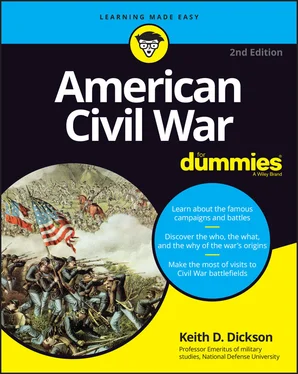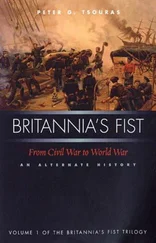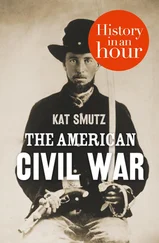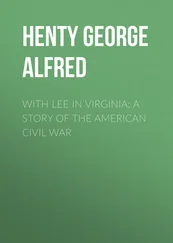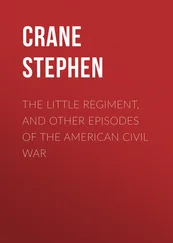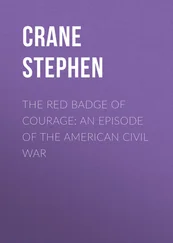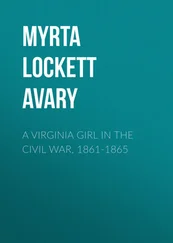Keith D. Dickson - American Civil War For Dummies
Здесь есть возможность читать онлайн «Keith D. Dickson - American Civil War For Dummies» — ознакомительный отрывок электронной книги совершенно бесплатно, а после прочтения отрывка купить полную версию. В некоторых случаях можно слушать аудио, скачать через торрент в формате fb2 и присутствует краткое содержание. Жанр: unrecognised, на английском языке. Описание произведения, (предисловие) а так же отзывы посетителей доступны на портале библиотеки ЛибКат.
- Название:American Civil War For Dummies
- Автор:
- Жанр:
- Год:неизвестен
- ISBN:нет данных
- Рейтинг книги:4 / 5. Голосов: 1
-
Избранное:Добавить в избранное
- Отзывы:
-
Ваша оценка:
- 80
- 1
- 2
- 3
- 4
- 5
American Civil War For Dummies: краткое содержание, описание и аннотация
Предлагаем к чтению аннотацию, описание, краткое содержание или предисловие (зависит от того, что написал сам автор книги «American Civil War For Dummies»). Если вы не нашли необходимую информацию о книге — напишите в комментариях, мы постараемся отыскать её.
American Civil War For Dummies,
American Civil War For Dummies
American Civil War For Dummies — читать онлайн ознакомительный отрывок
Ниже представлен текст книги, разбитый по страницам. Система сохранения места последней прочитанной страницы, позволяет с удобством читать онлайн бесплатно книгу «American Civil War For Dummies», без необходимости каждый раз заново искать на чём Вы остановились. Поставьте закладку, и сможете в любой момент перейти на страницу, на которой закончили чтение.
Интервал:
Закладка:
Civil War Strategy in Retrospect
Despite all of the different angles, advantages, disadvantages, and elaborate strategies, winning the war would depend on who could hold out the longest, although this fact was not obvious to most strategists in 1861. Many strategists believed that a couple of big, largely bloodless battles would settle the matter and bring peace. In their view, the war, such as it was, would only last a few months, six at the most. Only a very few understood what this war actually meant and what it would cost to win. Very soon, both sides would learn hard lessons about modern war and adjust their strategies to adapt to the new circumstances they found themselves in.
Chapter 6
Organizing and Training the Armies
IN THIS CHAPTER
 Exploring the different categories of units that fought the war
Exploring the different categories of units that fought the war
 Uncovering who was in charge
Uncovering who was in charge
The Civil War was a war fought by amateurs. Only a very small number of men in America had military experience. Volunteers and militia units called up for active service for a specific period of time had always fought in earlier American wars. These units were of notoriously poor quality, unless thoroughly trained and properly led.
As the new soldiers found out rather quickly, joining the army didn’t necessarily mean wearing a fancy uniform and impressing the women (although that certainly was a motivator for signing up). It often meant tedious hours of marching, standing in formation, inspections, waiting, and learning how to use all the equipment the army issued to you. It meant learning to follow orders, working and thinking as a unit, and developing the skills necessary to survive in battle. The American men who rushed to join the colors in 1861 weren’t always too thrilled to conform to the ways of the military. For them, experience would be a stern teacher.
Making Civilians into Soldiers
Between Fort Sumter in April 1861 and the battle of First Manassas in July 1861, the Union and Confederate governments worked to take tens of thousands of eager civilian volunteers with a smattering of professional officers and enlisted men and train, equip, and deploy them in organized military units that were capable of more than just looking good and consuming supplies. This is not a rapid process in the best of situations. Both armies had far too few experts in military training available to do the teaching. It took months, even over a year for everyone to learn this new trade. Even then, the quality of training in units varied widely. Often, it was the test of combat that determined whether a unit was capable of functioning properly. Those lessons learned in combat were then applied in earnest. Training improved over time, but the period between the onset of the war in 1861 and the spring of 1862 was chaotic.
Fighting in the frontier: The regulars
The Union had a core of over 16,000 regular (semiprofessional) soldiers who were capable of overseeing conditions on the frontier but were far from capable of providing the leadership and training necessary to turn masses of unruly volunteers into soldiers. The U.S. government as a result kept regular units separate from volunteers. Thus, the regular army remained small throughout the war, much of its strength still parceled out on the western frontier guarding against American Indian raids. The Confederacy, of course, had no regular army, but did make the best use of those regulars who had joined the Confederate army. These officers were integrated into the volunteer units to provide valuable leadership and training. For both armies, the process of turning civilians into soldiers fell to a combination of professional officers and former West Point graduates who returned to active service.
Responding to the call: The militia
Nearly every state had militia units, the forerunner of our National Guard units today. Militia units were locally recruited volunteers that the state intended to use in an emergency or to be called up to join the regular army during a war. Over the years, largely due to neglect from the state government, they had become more social drinking organizations than military units. The few called up for the Mexican-American War were so poor that they were never used in combat. In reality, other than having a rudimentary knowledge of military formations and use of weapons, the vast majority of militia units were of no immediate use.
Joining to fight: Volunteers — then Conscripts
Volunteer units were the most common military organizations at this early stage of the war. Young men from towns and cities formed ad hoc military organizations, usually companies, volunteering for military service for 90 days (others volunteered for three years). These units would report to their state capital, where they would be combined with other volunteer units to form regiments. Volunteer companies elected their own officers, usually the most popular or best politician among the group.
ELECTING OFFICERS IS A BAD IDEA
While a good idea for the Kiwanis club, having the rank and file elect leaders in military units is not wise. Military leaders have the unenviable task of ordering their soldiers to do things that will result in possible wounds or death. Friendship in this case must be set aside, and those who are ordered to face such danger have to have confidence in the man giving the order. The one who won the popularity contest might not necessarily be up to such a task or the responsibility. Although the election of officers continued for some years (especially in the Confederate armies), the practice mostly died out, and a system of merit promotions based on demonstrated ability took its place.
 While volunteers are usually plentiful at the onset of any war, wars do not grow in popularity after the onset of combat. The pool of volunteers quickly dries up, leaving the government only one choice: conscription, or as the U.S. government in 1862 conveniently put it, “universal military liability.” This meant all able-bodied male citizens by law could be enrolled in the army by compulsion (force). Both the Union and Confederate governments resorted to conscription early in the war to maintain manpower requirements.
While volunteers are usually plentiful at the onset of any war, wars do not grow in popularity after the onset of combat. The pool of volunteers quickly dries up, leaving the government only one choice: conscription, or as the U.S. government in 1862 conveniently put it, “universal military liability.” This meant all able-bodied male citizens by law could be enrolled in the army by compulsion (force). Both the Union and Confederate governments resorted to conscription early in the war to maintain manpower requirements.
After volunteer regiments were formed (initially made up of about 1,000 men), they were shipped to an assembly point, most often the capital city (either Richmond or Washington), were equipped as best as possible, organized into brigades and divisions, and then into a corps. Once the command structure had been established, the new soldiers were introduced to the discipline and drill necessary to maneuver and fight in battle. In most cases, the regimental, brigade, division, and corps commanders of these new units had only a bit more experience than their soldiers did.
Qualifications of Union and Confederate Officers
In the Union army, state governors gave rank to officers of the newly formed regiments. Some of these officers inevitably were political friends, given a plum assignment because they had influence at election time. President Lincoln appointed generals. While many generals he appointed had experience as regular army officers, a fair number of appointments went to Democrats or influential Republicans in key states who helped Lincoln maintain his precarious wartime coalition. Others — representatives of key immigrant groups with powerful voting blocs (the Irish and the Germans) — received general’s stars. West Point graduates, who had some exposure to military discipline and structure, were highly valued and contributed a great deal to molding capable units.
Читать дальшеИнтервал:
Закладка:
Похожие книги на «American Civil War For Dummies»
Представляем Вашему вниманию похожие книги на «American Civil War For Dummies» списком для выбора. Мы отобрали схожую по названию и смыслу литературу в надежде предоставить читателям больше вариантов отыскать новые, интересные, ещё непрочитанные произведения.
Обсуждение, отзывы о книге «American Civil War For Dummies» и просто собственные мнения читателей. Оставьте ваши комментарии, напишите, что Вы думаете о произведении, его смысле или главных героях. Укажите что конкретно понравилось, а что нет, и почему Вы так считаете.
